The A. papilionacea group consists
of just two species, A. papilionacea itself, commonly known as the Pink Butterfly Orchid and the Fan Lipped Orchid, A. collina.
The former
is a polymorphic species with a wide distribution and this
unsurprisingly gives rise to a significant range of natural and
regional variations. First described by Linnaeus as long ago as 1759, the taxon has been intensely studied ever since,
leading to the recognition of many forms and the creation of a list of synonyms far too
extensive to detail in these pages (no less than 67 in 2013). A genetic study in 1993 comparing subspecies grandiflora, papilionacea and aegaea (then heroica) determined that the minimal genetic difference's discovered, were
consistent with nothing more than separate geographic populations within a single
cohesive gene
pool and that they could not be regarded as sub-species, merely simple morphs.
These findings were not universally accepted and new taxa continue to emerge.
A. papilionacea subsp. septentrionalis
was first described by Kreutz in 2017 and refers to plants from the
more northerly regions of the species overall range; it is commonly
called the Northern Butterfly Orchid. The
lip is narrow when compared to many of its cousins but markings, although uncomplicated and more widely spaced are often
bolder. The hood is paler than those of other varieties and often of
brick red
colouration rather than mauve. As has been mentioned, its distribution
is northern, including south east France, northern Italy
the Balkans, Bulgaria and Romania where it is a late flowerer from mid
April to early June. The first four pictures are from Var,
south east of France and depict typical plants whereas the last three
are from northern Greece and examples of an intermediate swarm created
by hybridization between A. papilionacea subsp. septentrionalis and A. papilionacea subsp. balcanica.
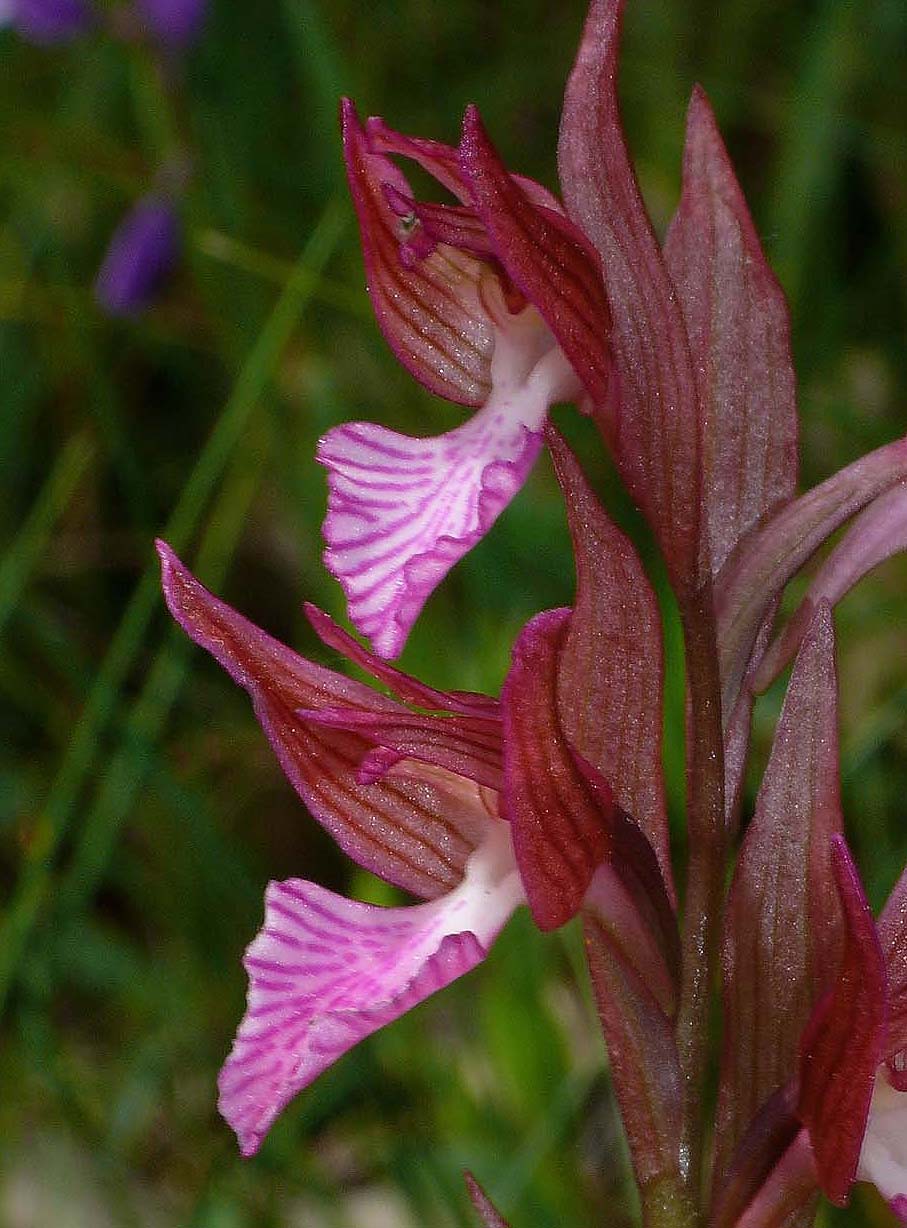
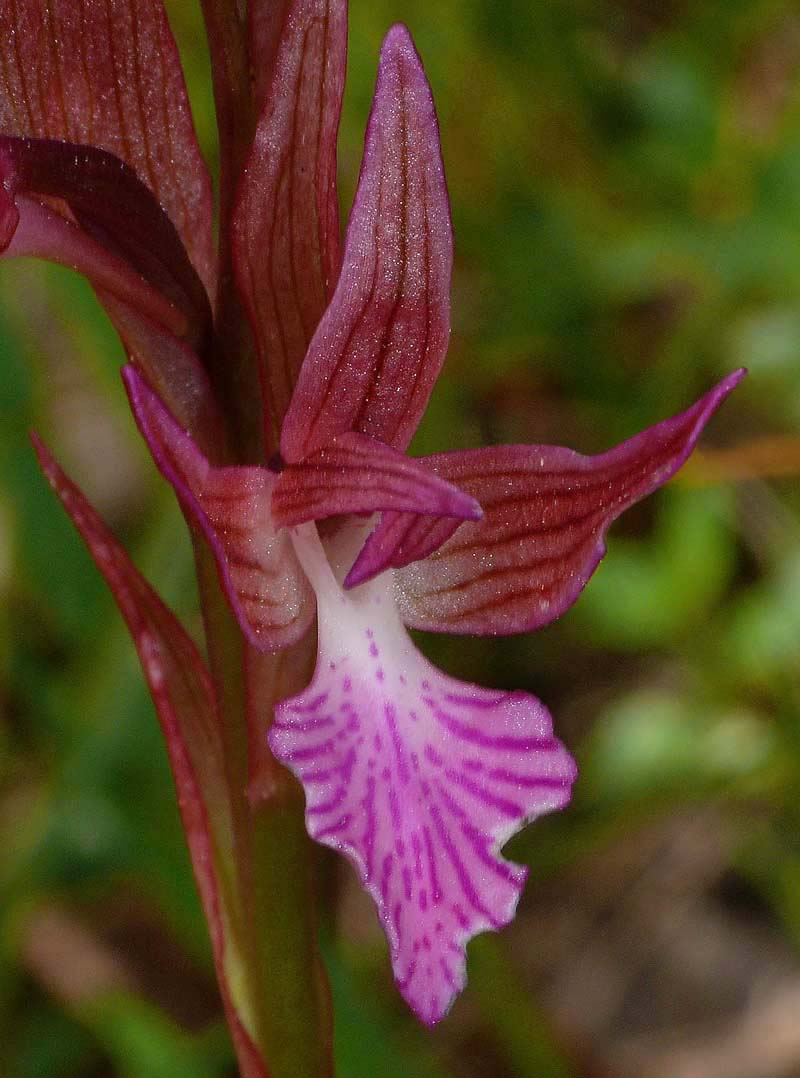
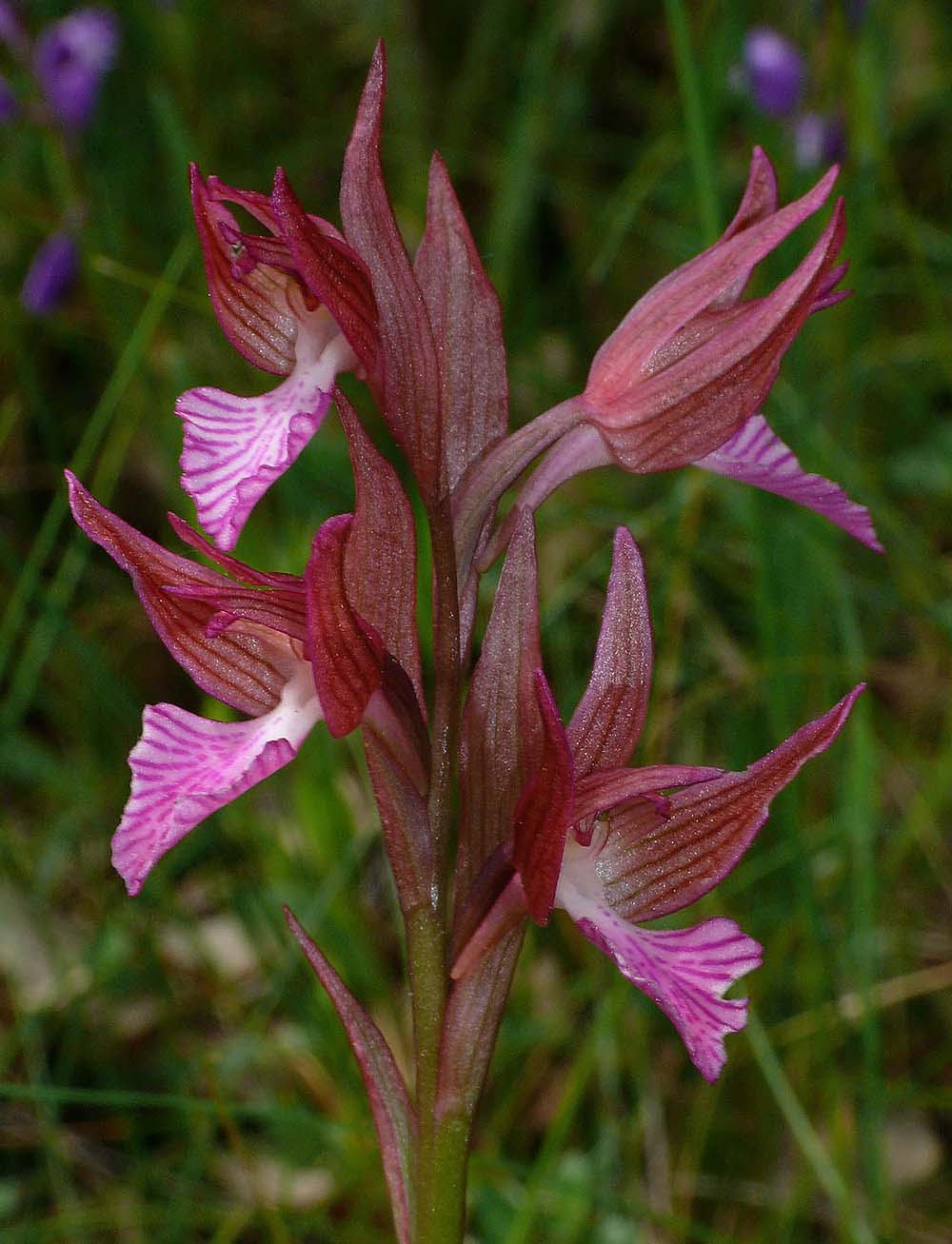
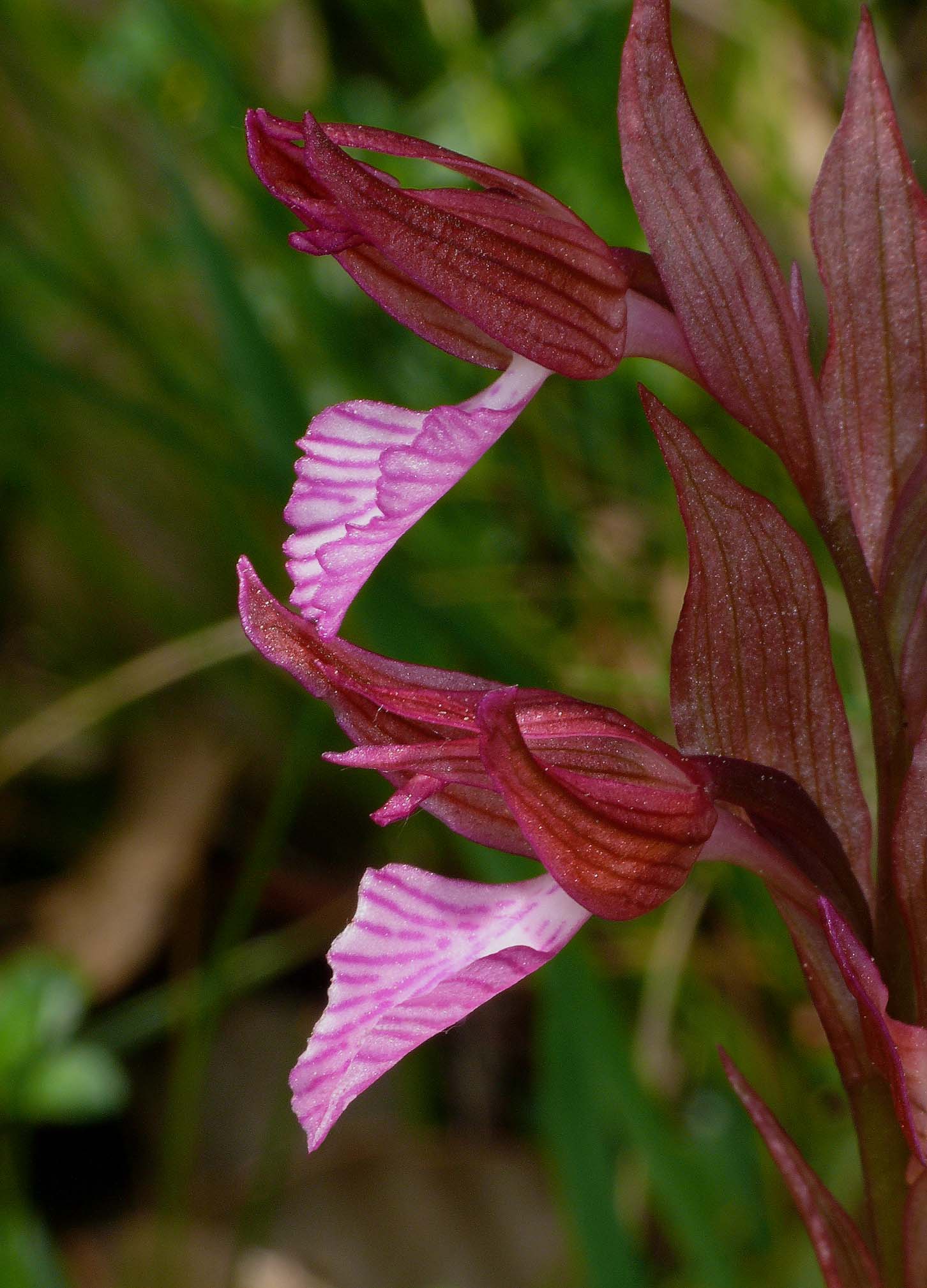
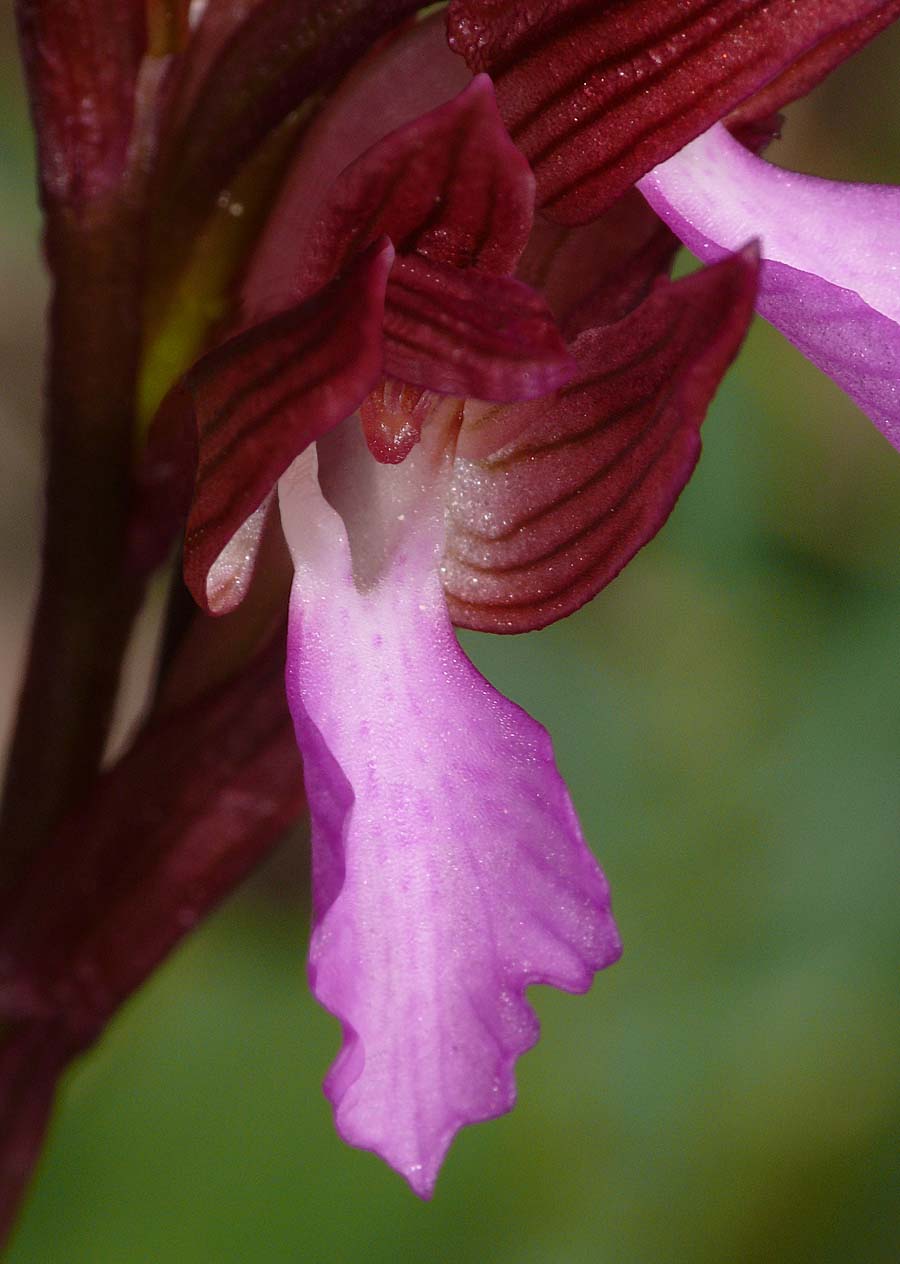

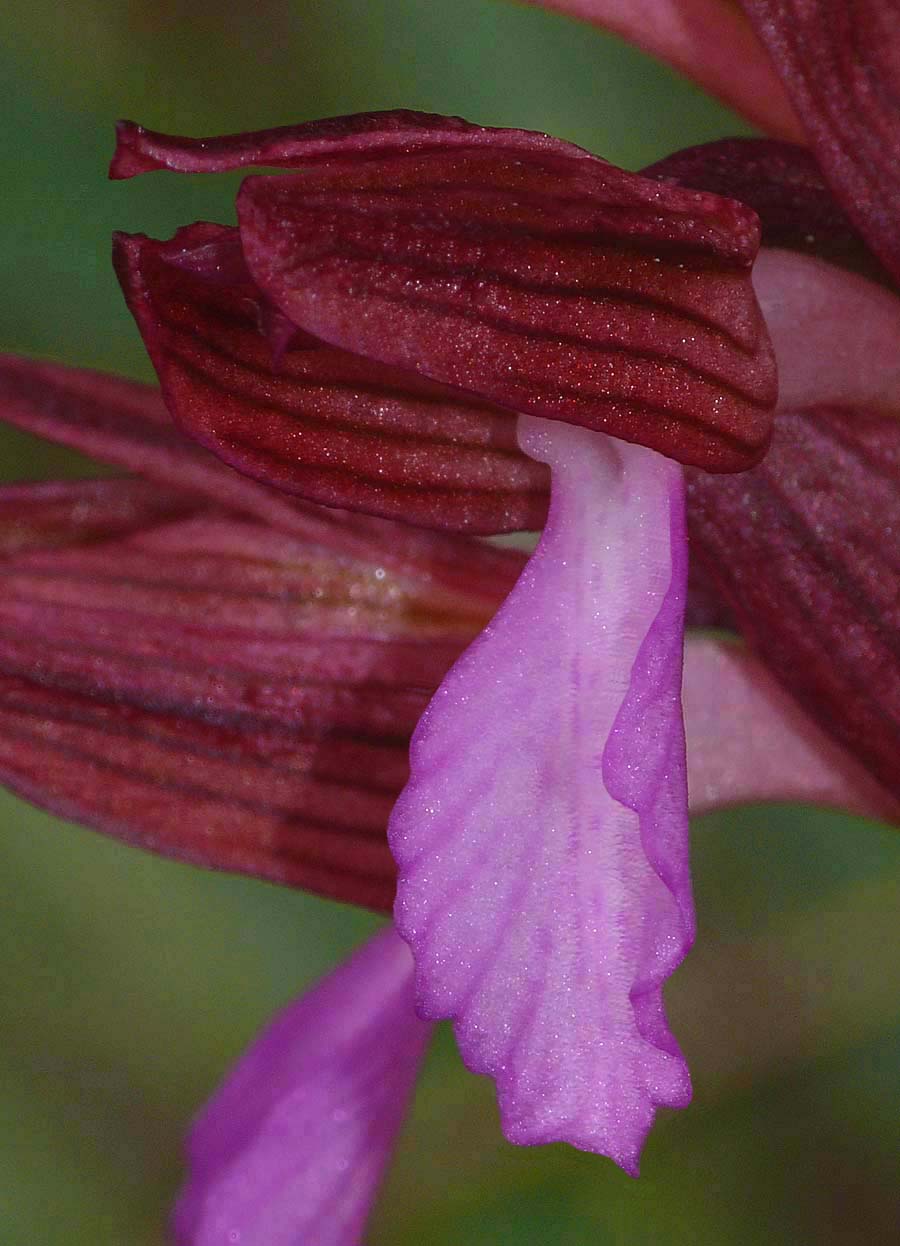
.